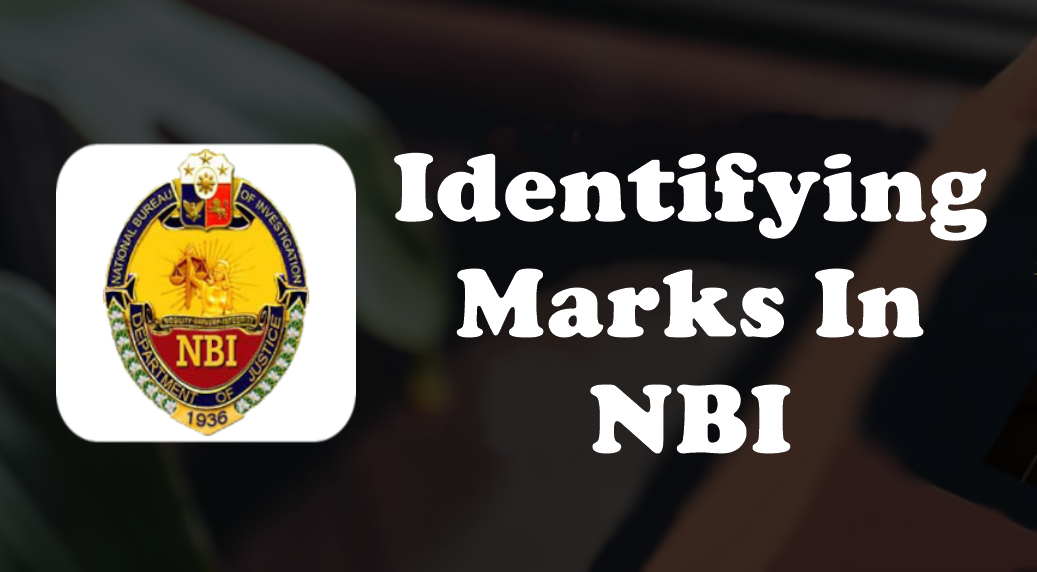Identifying Marks In NBI For 2025
In 2025, identity verification has become more advanced, with the National Bureau of Investigation (NBI) in the Philippines enhancing its systems for greater accuracy and security. An important aspect of this process is the identification of physical marks, including birthmarks, scars, and tattoos. These distinguishing features are essential in background checks, employment screening, and criminal investigations where precise identification is necessary.
What are Identifying Marks?
Identifying marks are distinct physical characteristics that set an individual apart.
- Scars: Marks left by healed wounds or injuries.
- Birthmarks: Congenital skin marks or blemishes.
- Moles: Dark spots or raised blemishes on the skin.
- Tattoos:
- Other prominent features: This could include deformities, missing limbs, or other unique physical traits.

Why are Identifying Marks Important?
Identifying marks play an important role in the NBI clearance process:
- Accurate Identification: In cases where individuals share similar names or physical appearances, identifying marks help NBI personnel accurately distinguish between them.
- Preventing Mistaken Identity: By recording these unique features, the NBI can avoid issuing clearances to the wrong individuals, which could have serious legal consequences.
- Ensuring Efficiency: Accurate identification streamlines the clearance process, saving time and resources for both the applicant and the NBI. Must understand Dismissed cases on NBI
How to Declare Identifying Marks
When applying for an clearance, applicants are required to provide a detailed description of their identifying marks. It is essential to be accurate and specific when declaring these marks. Include the following information:
- Type of mark: Specify whether it is a scar, birthmark, mole, tattoo, etc.
- Location: Clearly indicate the location of the mark on the body (e.g., “scar on the left forearm,” “mole on the right cheek”).
- Size and shape: Provide an estimate of the mark’s size and describe its shape (e.g., “a circular scar about 1 inch in diameter or small”). Must check nbi Saturday timing
Additional Tips
- Be thorough: Declare all significant identifying marks, even if you consider them minor.
- Be honest: Do not attempt to conceal or misrepresent any identifying marks.
- Update your information: If you acquire new identifying marks (e.g., through an accident or surgery), update your NBI records accordingly.
By accurately declaring your identifying marks, you contribute to the efficiency and accuracy of the NBI clearance process, ensuring that you are correctly identified and that your records are kept up to date.






